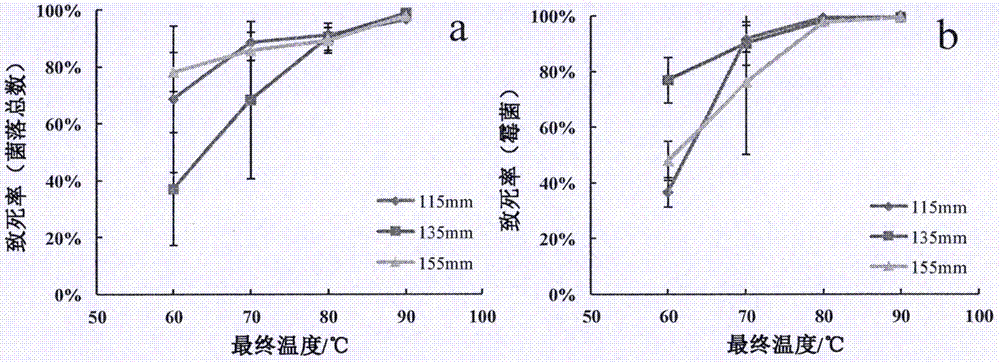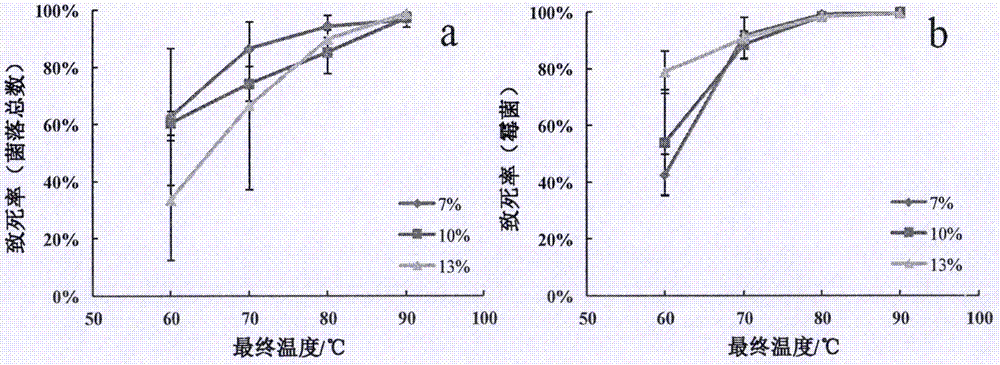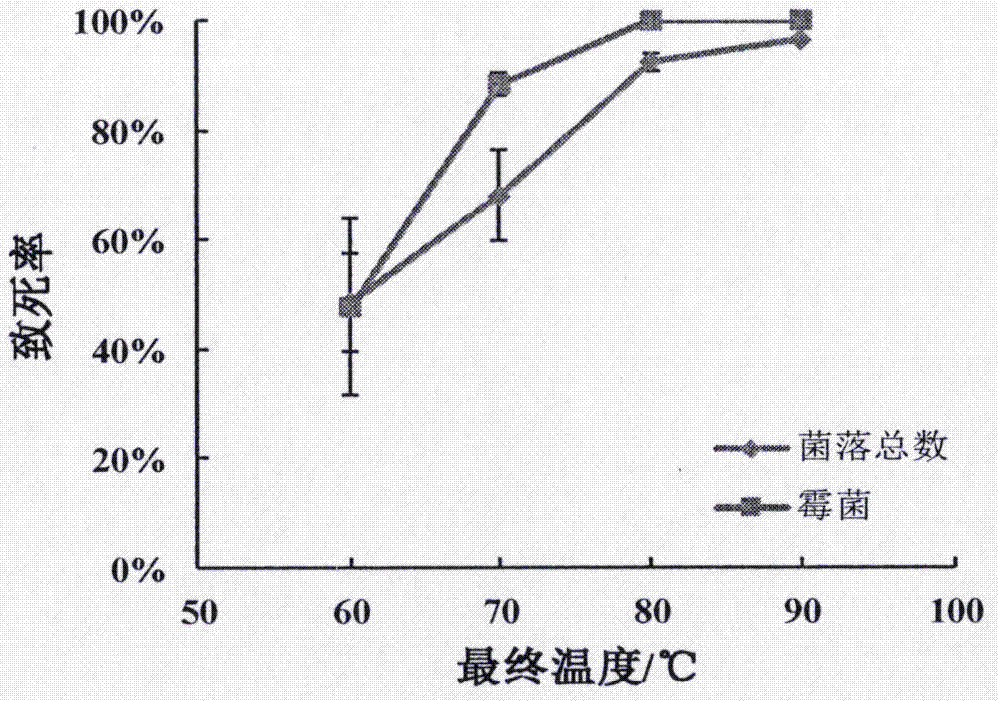Chilli powder processing method adopting radio frequency sterilization
A processing method and chili powder technology, applied in the field of food processing, can solve problems such as inability to guarantee product quality, and achieve the effects of high efficiency and environmental protection in the production process, quality assurance, and saving manpower and material resources
- Summary
- Abstract
- Description
- Claims
- Application Information
AI Technical Summary
Problems solved by technology
Method used
Image
Examples
Embodiment 1
[0022] Embodiment 1, the heating up of radio frequency and dry heat heat treatment chili powder under different conditions
[0023] For paprika with a moisture content of 7%, 10% and 13%, radio frequency heating is carried out at the distance between plates of 115, 135 and 155mm, and dry heat treatment is adopted at 110°C, and the paprika reaches 60, 70, 80 and 90°C The time required is shown in Table 1. This provides a comparison of processing time for controlling materials to reach different final temperatures during radio frequency sterilization.
[0024] Table 1 Comparison table of temperature and time of materials treated by radio frequency and dry heat
[0025]
Embodiment 2
[0026] Embodiment 2, the influence of pole plate spacing and material heating temperature on sterilization effect
[0027] The original bacteria content is 5.8×10 4 ±1.0×10 4 (total number of colonies) and 4.0×10 3 ±1.3×10 3 (mold), paprika with a moisture content of 13% was used for sterilization tests with different plate spacings and temperatures. figure 1 It is the change of the total number of colonies and the lethality of the mold with the heating temperature of the material (60, 70, 80 and 90 ℃) when the chili powder is sterilized by radio frequency at the distance between the plates of 115, 135 and 155 mm. The results showed that the total number of colonies and the lethality rate of mold both increased with the increase of the final temperature under the three plate spacing. When the distance between plates was 115mm, when the final temperature was 60℃, the total number of colonies and the lethality rate of mold in paprika were 68.6%±25.8% and 36.6%±5.3%, respecti...
Embodiment 3
[0028] Embodiment 3, the influence of moisture content and material heating temperature on bactericidal effect
[0029] The original bacteria content is 5.5×10 4 ±5.0×10 3 (total number of colonies) and 4.4×10 3 ±3.9×10 2 Paprika (mold) was used for bactericidal tests of moisture content and material heating temperature. figure 2 It is to carry out radio frequency heating under the pole plate spacing of 135mm, and the moisture content is 7%, 10% and 13% paprika total number of colonies and mold lethality with the change of material temperature (60, 70, 80 and 90 ℃). The results showed that the total number of colonies and the lethality of mold in paprika increased with the increase of final temperature under different moisture contents. When the final temperature was 60℃, the total number of colonies and the lethality rate of mold in paprika with moisture content of 10% were 60.4%±4.1% and 53.9%±18.5%, respectively. When the final temperature reached 90°C, the total numb...
PUM
 Login to View More
Login to View More Abstract
Description
Claims
Application Information
 Login to View More
Login to View More - R&D
- Intellectual Property
- Life Sciences
- Materials
- Tech Scout
- Unparalleled Data Quality
- Higher Quality Content
- 60% Fewer Hallucinations
Browse by: Latest US Patents, China's latest patents, Technical Efficacy Thesaurus, Application Domain, Technology Topic, Popular Technical Reports.
© 2025 PatSnap. All rights reserved.Legal|Privacy policy|Modern Slavery Act Transparency Statement|Sitemap|About US| Contact US: help@patsnap.com



